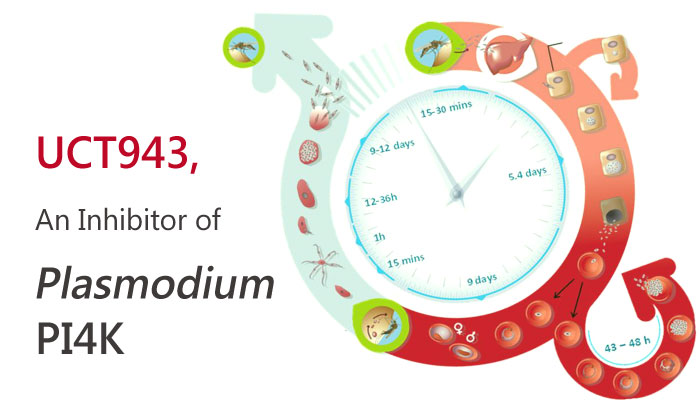Malaria is an infectious disease. Malaria transmits to people through the bite of female Anophelesmosquitoes infected with Plasmodium falciparum or Plasmodium vivax. The disease still causes millions of people. The protozoan parasite Plasmodium causes Malaria. Four different species of Plasmodium: P. falciparum, P. malariae, P. ovale and P. vivax could cause human malaria.
firstly, Phosphatidylinositol-4-OH kinase (PI4K) is a target for Plasmodium. The target of PI4K is a key Plasmodium vulnerability, opening up new avenues of target-based discovery to identify drugs with an ideal activity profile for the prevention, treatment and elimination of malaria. PI4K is a lipid kinase. PI4K is the target of imidazopyrazines. In addition, the imidazopyrazines is the class of antimalarial compounds that inhibit the intracellular development of multiple Plasmodium species at each stage of infection in the vertebrate host. Moreover, Imidazopyrazines exert their effect through inhibitory interaction with the ATP-binding pocket of PI4K, altering the intracellular distribution of phosphatidylinositol-4-phosphate.

Above all, UCT943 is a next generation Plasmodium falciparum PI4K inhibitor for the treatment of malaria. Hopefully, UCT943 inhibits the P. vivax PI4K (PvPI4K) enzyme with an IC50 of 23 nM. UCT943 is one of the most potent compounds assessed in the 2-aminopyrazine chemical series, with IC50s of 5.4 and 4.7 nM against NF54 and K1 P. falciparum strains, respectively. Besides, UCT943 kills the malaria parasite by blocking the parasite’s PI4K and protects from malaria infection. As a result, UCT943 has potential as a new antimalarial drug that may contribute to global malaria eradication efforts.
Reference:
Antimicrob Agents Chemother. 2018 Aug 27;62(9).